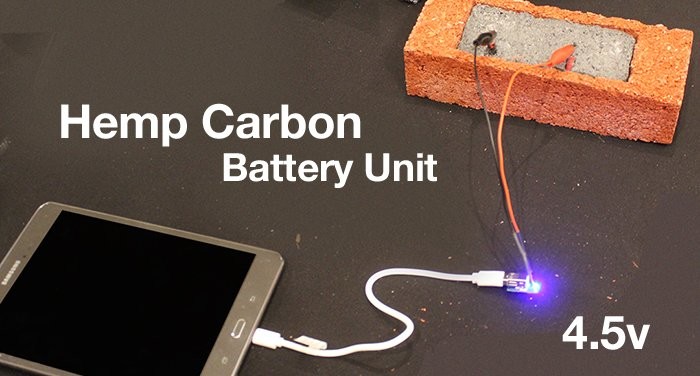Many are familiar with the medicinal and recreational uses of Cannabis Sativa L., but the plant continues to be utilized beyond healing and pleasure. This utility has even been proposed to be the original motive behind the prohibition of cannabis/hemp in the first place, which in many places continues today. But, can we use cannabis to create a more sustainable society?
Cannabis Science
16/07/2019
Can cannabis save the world?
“If history proved that these corporations conspired to sponsor fascists, bribe politicians and eliminate streetcars in order to sell more cars and oil, is it so much of a stretch to believe they also conspired to eliminate hemp – another natural competitor? And is it that hard to believe that these same corporations continue to do so?”
A hemp-fueled world cut down in its infancy
The above quote is from David Malmo-Levine´s blog, where he goes through the economics, history, and politics of hemp as a (bio)fuel. Malmo-Levine, who is the curator of the Herb Museum in Vancouver, and one of the authors of The Pot Book (Holland ed. 2010) tells how in the early days the automobile industry was invested in hemp as a source of extracting methanol and ethanol to fuel cars. However, an unholy alliance of oil- and other rich tycoons eventually managed to prohibit the use of cannabis/hemp in the early part of the 20th century, and the world has been relying on petrochemicals ever since, with devastating consequences to the climate and environment.
Much more than just a source for bio-fuel
However, the versatility of the cannabis plant goes beyond its use as a source of biofuel. According to Malmo-Levine “Not satisfied with just using biofuels, [Henry] Ford actually made a car with a veggie-plastic body made from (10%) hemp, flax, pine, soybean and ramie fiber, which was ten times stronger than steel yet one-third the weight”.

These days several modern auto companies, from BMW to Mercedes are re-discovering Ford´s initial idea of using hemp, not yet as a biofuel but as a biocomposite material in a form of hemp fibre for their interior design. Not only does this lower the weight of the car, and thus improving mileage, but if you have a car accident, having hemp fibre flying around instead of sharp glass fibre, might increase your chances of survival. Recently, a Swedish company won the European Industrial Hemp Association´s (EIHA) Innovation Award for their product which is polypropylene reinforced with 30% hemp fibres. They have also used their biocomposite in auto manufacturing, and making luggage, so Ford´s original idea for a hemp car is finally becoming reality, albeit only after 80 years.

Can hemp save world hunger?
Of course, hemp has not only fueled our cars, but hemp seeds filled with various plant proteins and other nutrients have been fueling human mileage for thousands of years. And now human technology is taking this natural source of plant protein to the next level; 2nd place at the EIHA Innovation Awards went to Absolute HempProtein by the German company BAFA Neu GmbH. Their innovative and vegan-friendly hemp protein powder contains over 70% of complete protein which sounds incredible, especially if you search how much protein most common meat products have.

Before we carry on, let us not forget that for all the uses portrayed in this article, hemp is arguably much more sustainable, and profitable, cash crop than most industrial crops we use today. Take cotton for instance; if we started wearing more hemp based clothing, instead of cotton, we would need approximately 5 times less water and 2 times less land area to grow the same amount of material needed for the same amount of units. Of course, industrial hemp farming and especially indoor cannabis cultivation need to be done with close consideration of water and energy use for instance, but these environmental impacts are easier to control when the growers don’t have to hide and live in fear of law enforcement. Except maybe for the Environmental Compliance Inspector.

Cannabis changed how we view the world
In addition to using hemp to fuel both ourselves and our cars, early human uses of Cannabis Sativa L. have included the plant’s fibres for making ropes and sails that helped to discover “the new world”, and hemp paper to write about those discoveries. Those same “discoveries” would later lead to documents that reshaped the world yet again. Take the Declaration of Independence of the USA or their Constitution. Both were drafted on hemp paper, before being copied engrossed on parchment (animal skin treated with lime). A recent study (Ren et al 2019) also found evidence that humans have been smoking cannabis in China already 2500 years ago! It is the last 100 years or so when the variety of industrial and other uses for cannabis/hemp have been prohibited on a global scale, initiated by the USA and implemented by most countries by ratifying the UN “drug conventions”.
The future of industrial hemp – is now
Despite the ban on large scale industrial uses for hemp and cannabis, which has affected already several generations, modern uses of hemp have developed together with the technological revolution that we have witnessed while entering the anthropocene.
Hemp(con)crete, as building materials and other insulation materials for housing, hemp-nanobatteries for energy storage and distribution, biodegradable plastic packaging and various other uses as a biocomposite are some of the innovations we have at our disposal nowadays. The plants potential as a renewable energy source is another possible solution to tackle some of the challenges that we are facing due to the rapid overuse of fossil fuels and petroleum-based plastics.
But, as another cannabis author, Chris Conrad states in his book Hemp, lifeline to the future, published in 1994, “Make no mistake about it: this is not an overnight miracle cure for all our ills.” Conrad, who helped edit another landmark book revealing hemps potential, namely Jack Herer´s The Emperor Wears no clothes, says that; “Hemp is part of a long-term process of repairing our economy and environment. Hemp restoration will yield permanent financial benefits that will reverberate throughout the economy for generations to come. Given the scope of today´s environmental and economic crises, it is time for national and global crash programs to restore hemp and explore its vast potential.”
Global drug policy climate is also witnessing rapid change as first Uruguay in 2013 and then Canada in 2018 legalized “adult use” of cannabis. Even the USA, the initial instigator of the “war on weed”, has made hemp federally legal again, removing it from the Controlled Substance Act signed by Richard Nixon back in 1971, and which marked one of the many beginnings of the “War on Drugs”. Increasing amount of States have now legalized both medical and “adult use” of cannabis, so people are increasingly realizing that indeed, the Emperor wears no clothes.
Whether it is health or economics what drives this “lifeline to the future” as Conrad framed it over 25 years ago, cannabis is out of the green closet and what we need are practical and well-thought approaches on how to benefit from the plant in an efficient, ethical and sustainable way. In other words, let’s pave “the way for the next decade in Cannabis and hemp policies” (Riboulet-Zemouli et al 2019).
References:
Holland ed. (2010) The Pot Book: A Complete Guide to Cannabis. Park Street Press
Ren et al (2019) The origins of cannabis smoking: Chemical residue evidence from the first millennium BCE in the Pamirs, Science Advances. https://advances.sciencemag.org/content/5/6/eaaw1391
Riboulet-Zemouli K, Anderfuhren-Biget S, Díaz Velásquez M and Krawitz M (2019), “Cannabis & Sustainable Development: Paving the way for the next decade in Cannabis and hemp policies.” FAAAT think & do tank, Vienna, March 2019. Licence: CC BY-NC-SA 3.0 IGO.

More articles you would like
Recommended
Tip us!
Do you have a tip or did you experience something amazing that you want to share with us? Send our team a message!
Your order is converted to euro's, however you will be able to select your desired currency in the payment process
Close